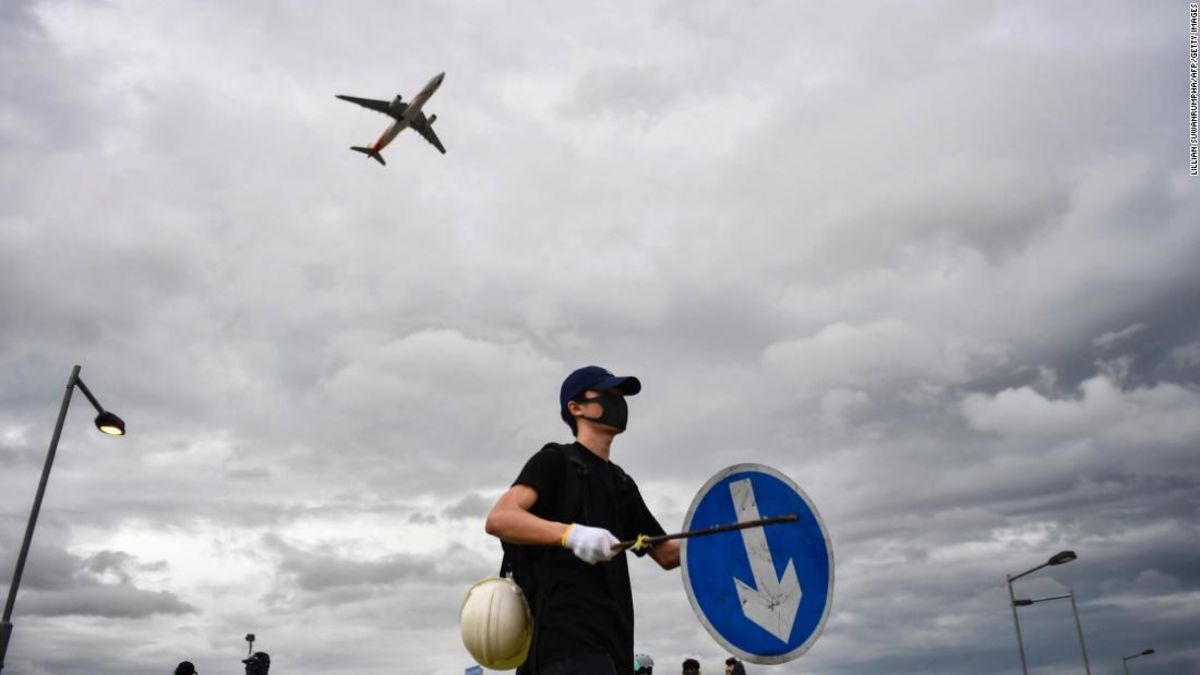The decline was mainly due to a decrease in visitor traffic from around the region.
“Passenger traffic to and from Mainland China, Southeast Asia and Taiwan experienced significant declines compared to August 2018,” said a statement from the Airport Authority.

Passengers walk through barriers set up by protesters on a road near Hong Kong International Airport on September 1, 2019.
LILLIAN SUWANRUMPHA/AFP/Getty Images
An ‘incredibly challenging month’
As well as passenger numbers, Hong Kong airport saw a 3.5% drop in air traffic movement in August compared to the same period last year and a 11.5% year-on-year drop in cargo to 382,000 metric tons in August.
“Amid global trade uncertainties, cargo volume continued to contract in August,” the statement said. Transshipments and imports also declined by 19% and 15% year-on-year, respectively.
“In the past few months, there have been huge challenges to airport operations at times,” C. K. Ng, the AA’s executive director of Airport Operations, said in a statement. “Thanks to the concerted efforts of the airport community, we managed to maintain normal operations and minimize impact on travelers.”
Cathay Pacific’s Group Chief Customer and Commercial Officer Ronald Lam said August was an “incredibly challenging month, both for Cathay Pacific and for Hong Kong.”
“Overall tourist arrivals into the city were nearly half of what they usually are in what is normally a strong summer holiday month, and this has significantly affected the performance of our airlines,” Lam said.
“Our inbound Hong Kong traffic was down 38% while outbound was down 12% year-on-year, and we don’t anticipate September being any less difficult.”
Major hotels are also asking workers to stay home — in some cases, for no pay — as business slows down.
At least 700 restaurant workers have lost their jobs since June, the month when the protests evolved into massive demonstrations in the city’s streets, according to an industry union.
